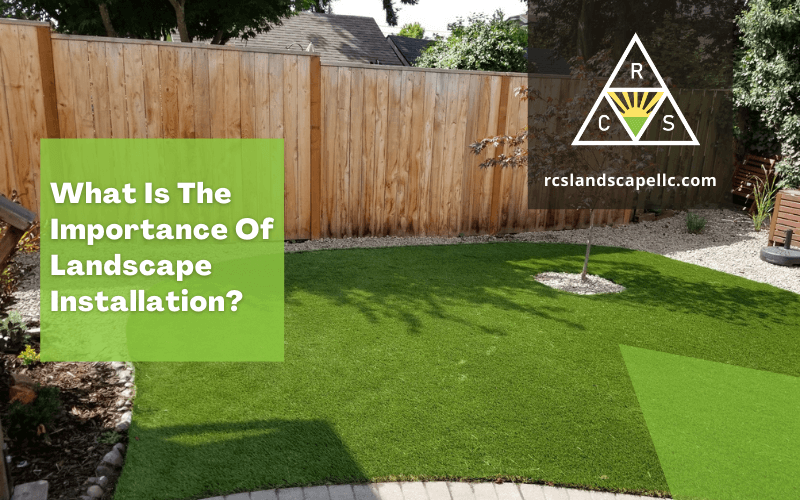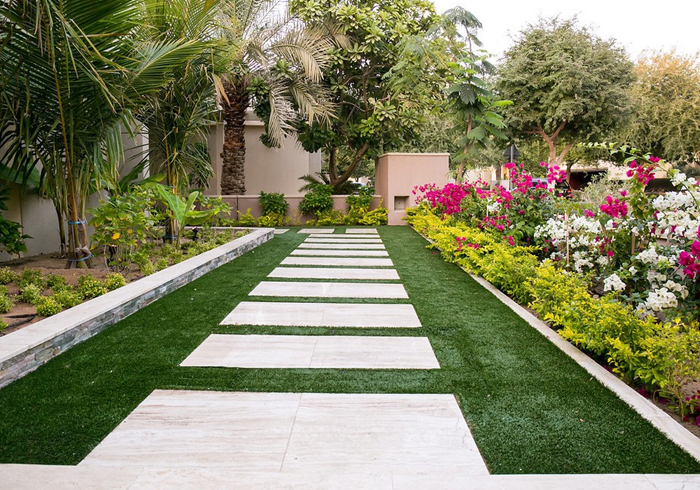The 20-Second Trick For Landscape Design
Table of ContentsEverything about Landscape DesignMore About Landscape DesignThe Greatest Guide To Landscape DesignLandscape Design Fundamentals ExplainedLittle Known Questions About Landscape Design.
A lawn can typically be split right into 3 areas: public (the front backyard), private (the back backyard), and service (generally the side backyard). The place of activity locations depends largely on the kind of location, the size of area needed, the kind of activity, and the desired distance to other activities and structures.The outside wall of your home often serves as the initial wall surface or beginning factor of an outside space. Inappropriate uses ought to be divided, and associated tasks, such as food preparation and dining, must be assembled to make the yard much more effective and delightful. When utilizing hardscape to develop areas, use building and construction product similar to that used in the home for continuity from your home right into the garden.
Linked rooms. Credit Report: Gail Hansen, UF/IFAS Making use of comparable hardscape attributes and repeating plants pulls the eye around the garden.
What Does Landscape Design Mean?

For mental comfort plants are used as physical or implied obstacles for privacy and security. Physical obstacles obstruct both the sight and accessibility to an area and include fences, walls and plant hedges. Indicated barriers, usually reduced expanding plants, block accessibility however not the view (Number 9). Various other functions of plants include cleaning the air, protecting against disintegration and soil loss, retaining dampness in the soil, and returning natural issue to the soil.
Physical and suggested barriers. Credit History: Gail Hansen, UF/IFAS For these factors, the kinds of plants to be utilized (such as trees, hedges, or groundcovers) should be selected in the beginning of planning (Landscape Design). Plant kinds are chosen for their useful abilities so that their future function and needed area can be thought about at the very same time

Getting My Landscape Design To Work
Each plant mass remains in front of, behind, or beside, one more mass. Figure 11. Horizontal plant layers. Credit Report: Gail Hansen, UF/IFAS Figure 12. Vertical plant layers. Landscape Design. Credit: Gail Hansen, UF/IFAS Repeating plants within a mass and duplicating masses with similar plants links the yard with each other. The private plant attributes have to be considered to efficiently layer and mass plants.
All plant compositions start with the primary framework plants, the large, mainly evergreen history plants-such as the trees and large bushes. These plants separate or enframe rooms, control the size of the space, and give the beginning point for choosing the suitable characteristics of the second layer, midground plants, for massing and infill.
Important factors in the garden need to be highlighted by the usage of unique plants, unique structures, or garden accessories. Marking thresholds or entrances to rooms can be made with entrances, arbors, and actions, or with making use of distinct and vivid plants. The kind and/or style theme of the garden will frequently help figure out the crucial factors and just how they must be highlighted.
Various other vital locations in the lawn are focal factors, which is utilized to aesthetically organize a designed area. Various viewpoints or point of views can reveal her latest blog various structures in the landscape that might require a selection of focal points.
The 5-Second Trick For Landscape Design

Plant kinds. Credit Report: Gail Hansen, UF/IFAS After type, texture is the following dominant attribute of a plant; rugged, medium and great textures can be made use of for comparison and emphasis in the landscape.
The pleasant aroma of plants, the noise of wind in the trees, the sound and structure of water, and the colors and appearances of sculptures, pots and garden furniture all contribute to the experience of the garden. One detail that is usually overlooked is the result of light on next the visual appeals of the plants.

Unknown Facts About Landscape Design
It is essential to recognize the ultimate mature size of plants so they can be put in the right area and spaced correctly when they are set visite site up. Giving plants space to expand is a challenge because the typical fully grown size is usually based upon optimum expanding problems and the ecological conditions of a site may create a plant to enlarge or stay smaller sized.